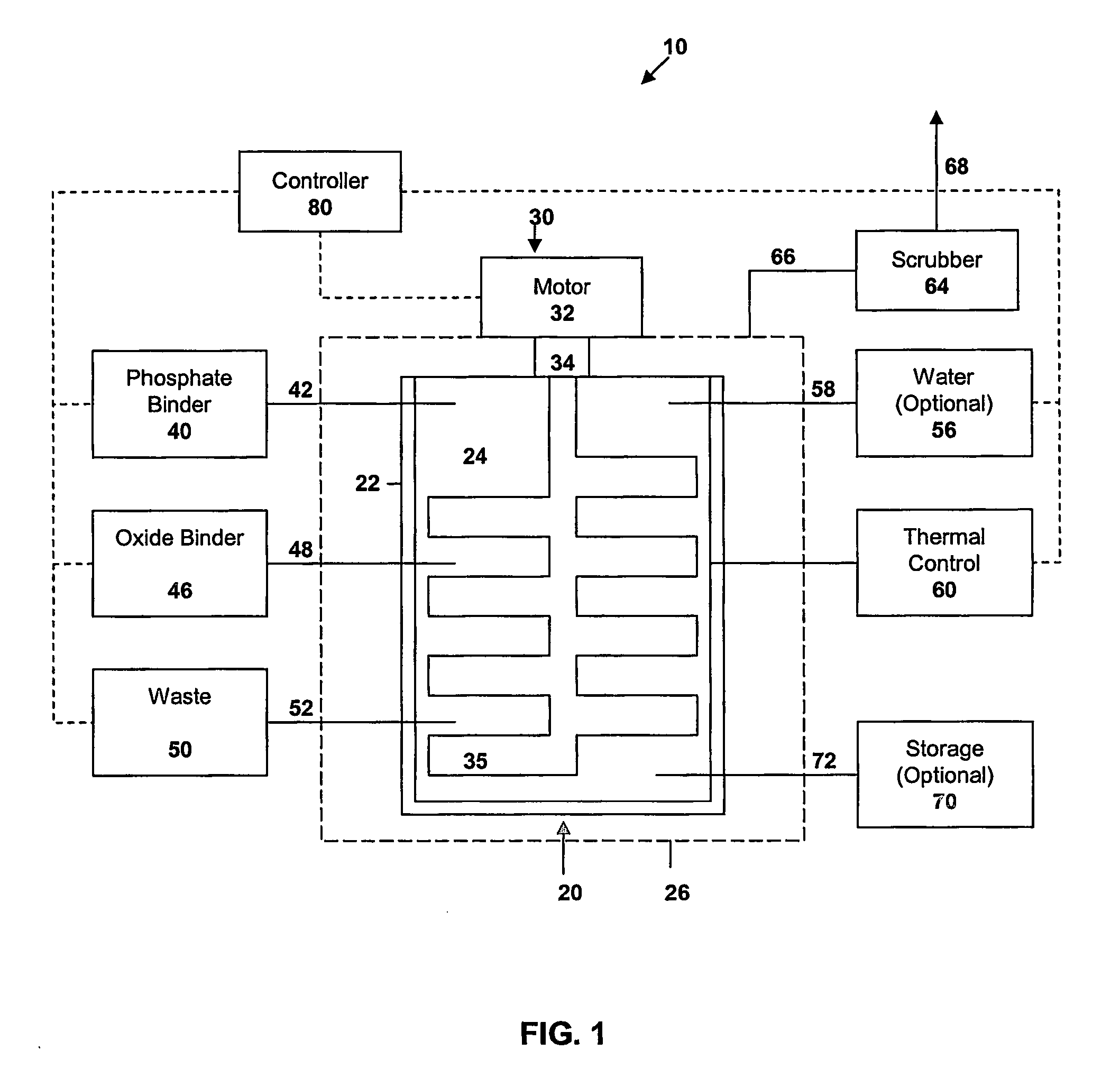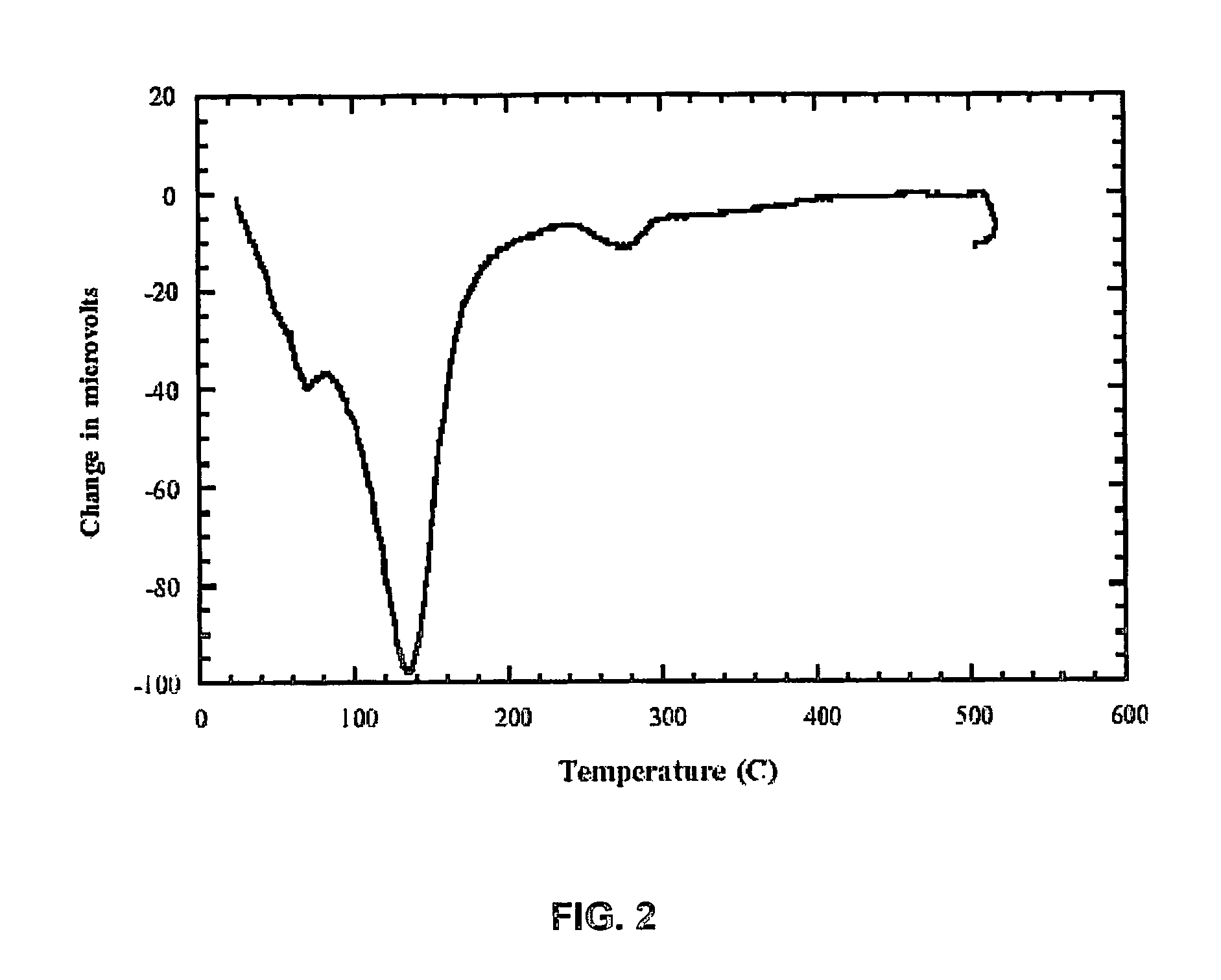Method of waste stabilization with dewatered chemically bonded phosphate ceramics
a chemical bonding and phosphate ceramic technology, applied in the direction of solid waste management, sustainable waste treatment, nuclear engineering, etc., can solve the problems of fully or partially dewatered cbpc waste form, achieve the effect of reducing the weight of the resulting dewatered waste form, avoiding volatilization, and increasing the resistance of the resulting waste form to radiolysis
- Summary
- Abstract
- Description
- Claims
- Application Information
AI Technical Summary
Benefits of technology
Problems solved by technology
Method used
Image
Examples
Embodiment Construction
[0016] Dewatered or anhydrous CBPCs as disclosed herein can be made from a typical hydrated CBPC waste form. Therefore, the following disclosure first contains a discussion of the preparation of a hydrated CBPC waste form, followed by a discussion of dewatering techniques.
[0017] This application claims priority to U.S. Provisional Application Ser. No. 60 / 450,563, entitled PHOSPHATE BONDED CERAMIC STABILIZATION CHEMISTRY APPLIED TO HIGH LEVEL RADIOACTIVE WASTES, filed on Feb. 26, 2003; this application also claims priority to U.S. Provisional Application Ser. No. 60 / 499,453, entitled ALUMINUM PHOSPHATE CERAMICS FOR HAZARDOUS WASTE STORAGE, filed on Sep. 2, 2003; and this application also claims priority to U.S. Provisional Application Ser. No. 60 / 537,207, entitled ALUMINUM PHOSPHATE CERAMICS FOR HAZARDOUS WASTE STORAGE, filed on Jan. 18, 2004 which three provisional applications are incorporated herein in their entirety by reference. This application incorporates by reference common...
PUM
| Property | Measurement | Unit |
|---|---|---|
| Fraction | aaaaa | aaaaa |
| Temperature | aaaaa | aaaaa |
| Solubility (mass) | aaaaa | aaaaa |
Abstract
Description
Claims
Application Information
 Login to View More
Login to View More - R&D
- Intellectual Property
- Life Sciences
- Materials
- Tech Scout
- Unparalleled Data Quality
- Higher Quality Content
- 60% Fewer Hallucinations
Browse by: Latest US Patents, China's latest patents, Technical Efficacy Thesaurus, Application Domain, Technology Topic, Popular Technical Reports.
© 2025 PatSnap. All rights reserved.Legal|Privacy policy|Modern Slavery Act Transparency Statement|Sitemap|About US| Contact US: help@patsnap.com


